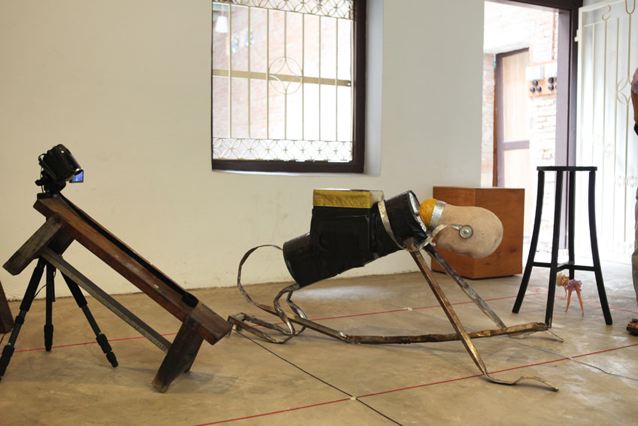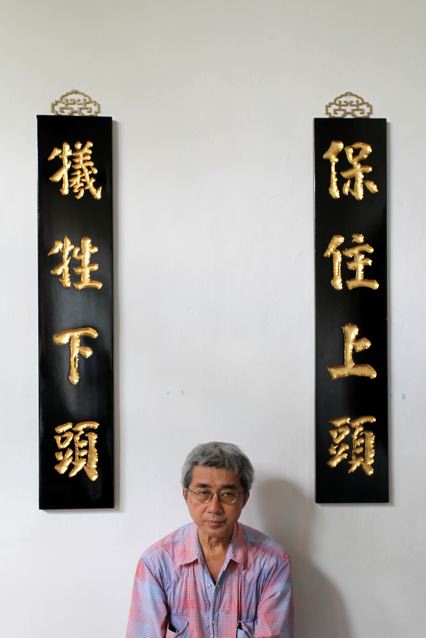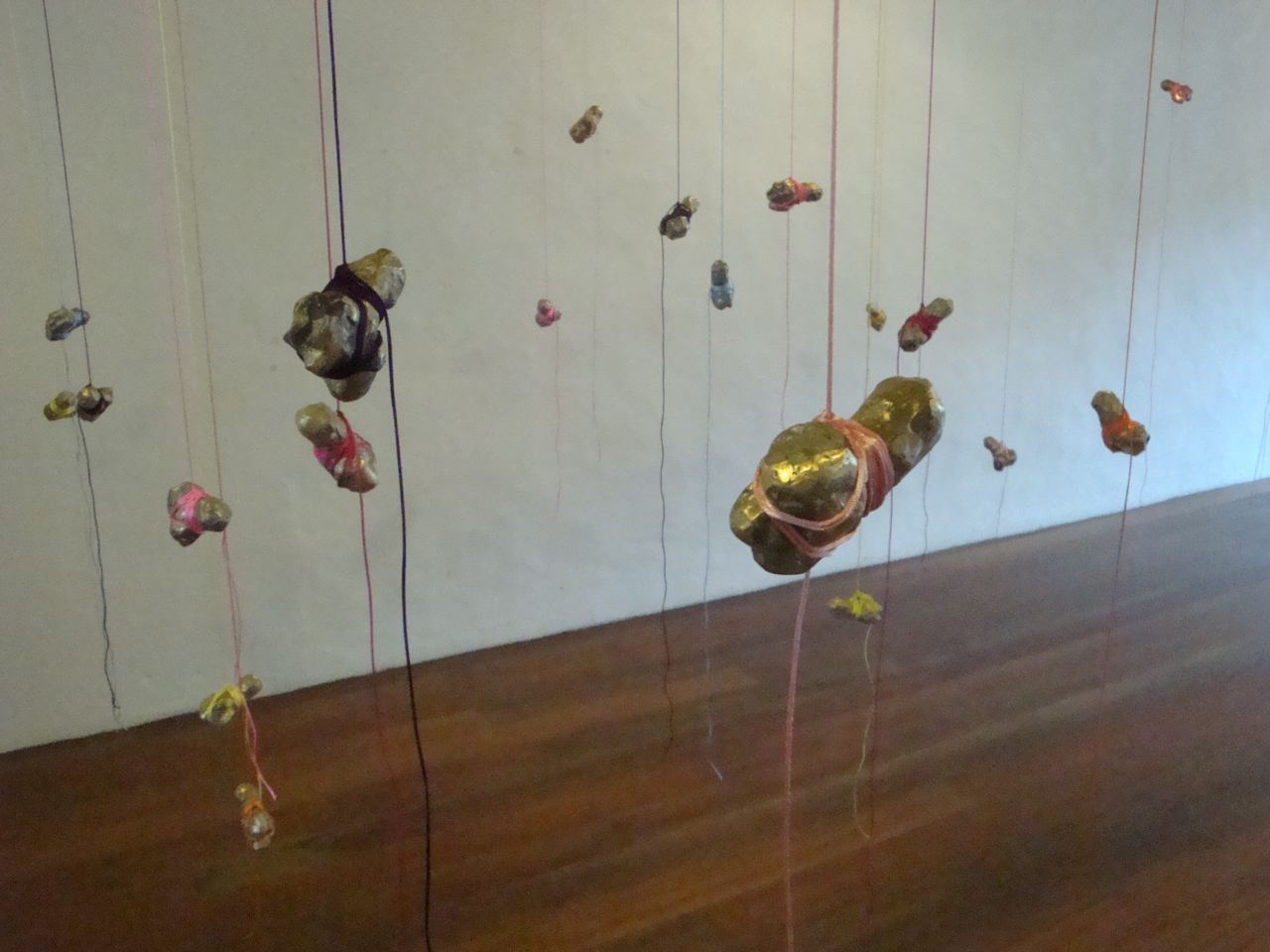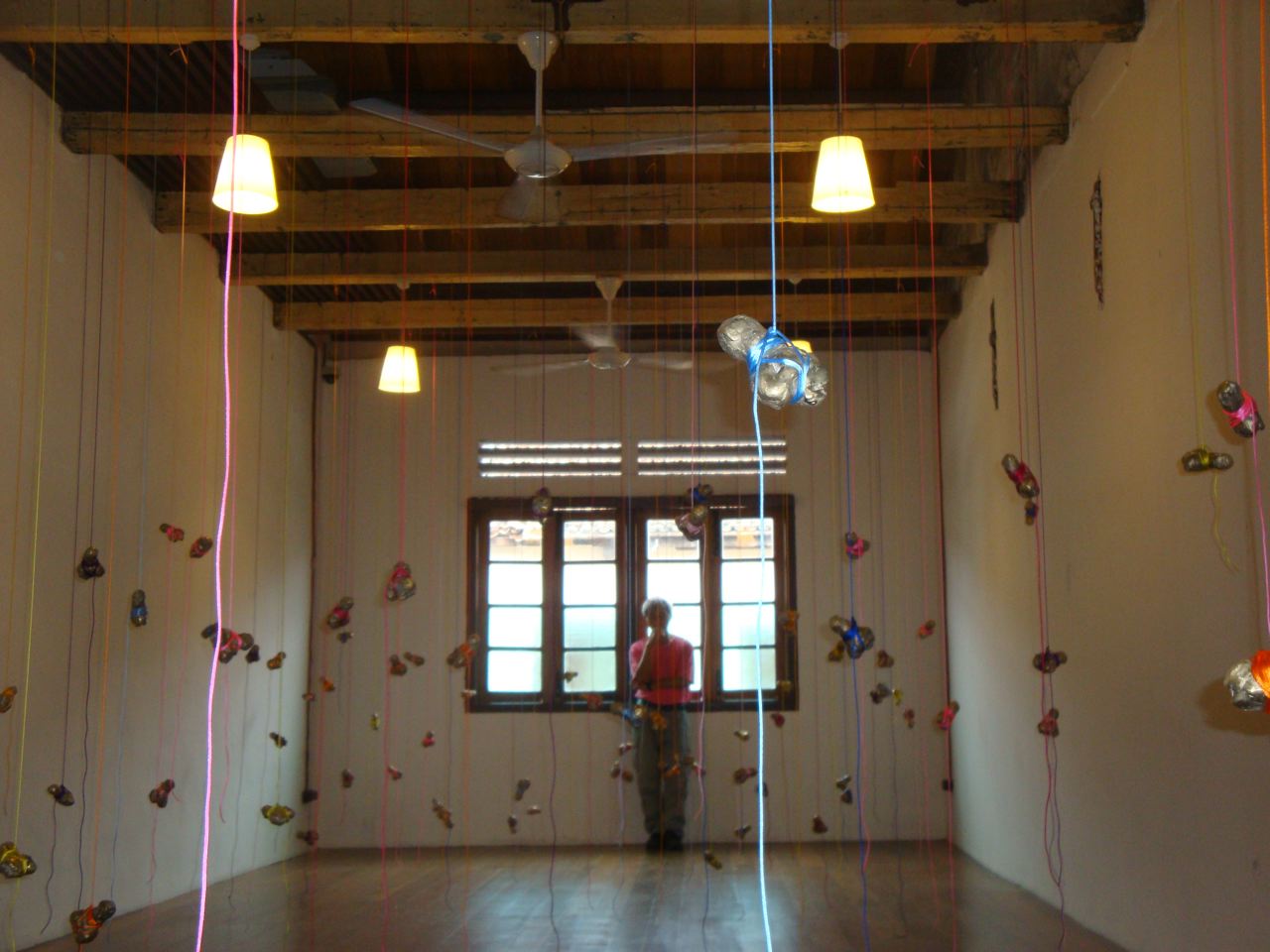Shows
Cheo Chai-Hiang’s “Don't Sit On Me”


Singapore-based artist Cheo Chai-Hiang’s latest project is humorous, playful and full of irony. Titled “Don’t Sit On Me,” the installation is currently on display at the Tun Tan Cheng Lock Centre, run by the National University of Singapore’s Department of Architecture, in a pair of converted two-storey shophouses in the historic Malaysian coastal city of Melaka. This title is borrowed from “a rare graffiti” the artist encountered five years ago while riding the Singapore MRT, a chance encounter that has become the project’s conceptual frame.
In an interview with Cheo in March he recalled the afternoon on the MRT when he sat next to the clandestine drawing of a penis with the English text “don’t sit on me” written above it. “When I saw the graffiti, I began to speculate: Who could this brave vandal be?” Cheo said. “Was it by a new PR [permanent resident] or a foreigner who had never heard of the Michael Fay case? Or was it a sign that angry young Singaporeans no longer wanted to be ‘sat on?’” He was particularly aware of the contrasting reactions of a nearby girl and her grandmother, who also saw the vandalism: “The little girl, who was excited she could read the text, probably didn’t know the image represented the male sexual organ. The grandma, on the other hand, would have ‘read’ the image, but not the English text. This whole episode further complicated my fascination with how meanings could be subtly ‘created’ and ‘transmitted’ through the teaching and learning of multi-literacy.”

This incident stayed with Cheo, along with its implications regarding information literacy, as well as social repression and the responses it incites; but it was not until last year, when he re-read the Chinese and English versions of late Singaporean playwright Kuo Pao Kun’s play, Descendants of the Eunuch Admiral (1995), that he developed his ideas for a project. Based loosely on the life of Zheng He, the eunuch admiral dispatched by the Ming emperor during the 15th century, Kuo’s play invokes the powerful imagery of castration to symbolize the state of “rootlessness” and loss implicit in multiracial Singapore, where English has become the lingua franca at the expense of so-called mother tongues—officially Mandarin, Malay and Tamil, reflecting the government’s racial categorization of Singapore society into “Chinese, Malay, Indian and Other”—often for the sake of economic progress. In "Don't Sit On Me," the significance of this linguistic or cultural loss is dramatized, yet cleverly masked, through Cheo's playful manipulation of visual associations and idiomatic wordplays drawn from Descendants of the Eunuch Admiral, mixed with the implications of the graffitied phrase.

Based on these loose associations, Cheo’s project has developed since August last year, through which he came to focus on the phallus and the chair as symbolic objects that can be both oppressor and oppressed. In terms of the phallus, it was whilst reading the English version that Cheo noticed discrepancies with the Chinese text. He said: “I had a strong feeling that certain English expressions in the writing must have been rigidly translated from Chinese, and therefore appeared to me to be awkwardly simplified.” In the English text, one of the characters remarks: “What I mean is, don’t we look like a network of pricks?” This phrase, “network of pricks,” caught Cheo’s attention, because it seemed to be missing in the original, which instead referred to a “big, complex network.” In Kuo’s original, instead of the Chinese word for “prick” he ironically uses the endearing euphemism baobei, which can mean “baby” or “treasure.” Cheo consequently conceived of the new Chinese phrase bao bei wang luo, literally a “network of baobei.”
For the exhibition, Cheo had four glossy black signboards, each around 50 cm long, crafted by a traditional signmaker, with carved and gilded Chinese characters. These were placed throughout the shophouse space. The first featured the symbolic phrase bao bei wang luo (“ baobei network”) and was left leaning against the brick wall of an otherwise empty front hall. As these words could also be read as “precious internet,” it could be suggestive of the shophouse being open for business—yet it also retains it’s euphemistic reading. The second sign reads ju yi fan san, meaning to infer about other cases from one instance. This was casually placed on the floor against the wall in the adjoining room.

Further inside the shophouse are two clusters of odd-looking, makeshift chairs that are direct responses to the titular theme “Don’t Sit on Me.” In August last year, Cheo invited friends to participate in the exhibition by making a chair, giving them two rules (which they were encouraged to break): 1) locate a discarded, broken chair or stool and 2) turn it into a makeshift chair or stool with “three long and two short” (san chang liang duan) legs. This deliberately employed a Chinese idiomatic expression that refers to death or danger, and thus gave Chinese-speaking participants one more possibility to toy with for their contributions. Eventually, 65 chairs were created and sent, by curators, art administrators, art historians, writers, teachers and artists, young and old, from around the globe. These were installed in a grid marked by fluruoscent ropes.

On the second level 101 phallic bronze sculptures were hung from the old roof beams of the front room, juxtaposed with the chairs. These hanging phalli reference scene three of Kuo’s play, in which he describes a room in the Imperial Palace in Beijing which is said to have stored all the eunuchs’ castrated penises. Cheo gated the entrance to the room so that viewers could only observe from the doorway. Next to the entrance were the two remaining signboards, which work as a pair: the right one reads bao zhu shang tou (“protect the upper head”), meaning to protect one’s superior, while the second reads xi sheng xia tou (“to sacrifice the lower head”), meaning to sacrifice underlings. Invoking the “head” (tou) also deepens the phallic euphemism.
Viewed with the pair of texts, the hanging phalli might symbolize the death of millions of people who have historically been sacrificed in order to protect their ruler. On the other hand, it is possible to read the texts literally—to protect one’s head (i.e. one’s life) by sacrificing the “lower head” (i.e. one’s penis). This reference to symbolic castration is frequently invoked in Kuo’s play, which critically suggests Singaporeans are sacrificing a part of themselves in exchange for success or material comfort. Cheo extends this notion by juxtaposing the chairs, phalli and carved signs, further commenting on the poignancy of such sacrifice. Apparently a quaint, participatory project, the chairs are actually not only symbolic of one’s place or position in society, but visually invoke the “death and danger.”
On the first level of the shophouse, under the sky well, Cheo included five of his own chairs, red plastic chairs obtained from a secondhand junkstore with their legs sawn off so that three were taller. On each of these he placed a bronze phallic sculpture. This time, the phallic sculptures (“pricks” also referring to the English slang, connoting an unpleasant person) personify oppressive overseers, who treat foreign workers poorly.
However, symbolism aside, the use of these phallic sculptures led to intervention by the sponsor, the Department of Architecture (NUS), who requested that Cheo remove the “sensitive items” after the opening. As a result, the exhibition is now open to “invited guests” only—the alternative being the removal of all the phalli. The room of hanging phallic sculptures on the second floor is now padlocked, open for viewing only in the artist’s company. Though disappointed with the sponsor’s decision to censor the exhibition, Cheo adds graciously: “Without their assistance this project would not have materialized. I thank them sincerely. I felt disappointed initially. But I am sanguine and philosophical about the whole episode now.” Cheo has built a career making artworks that comment on socio-political issues in Singapore. Nevertheless, he was surprised that mechanisms of control can extend beyond the causeway, as they did in this instance.

Ironically, this work is less about the presence of the phallus than its symbolic absence. While Kuo’s play uses castration as a metaphor to highlight the sacrifices needed to attain material success, Cheo’s work uses the “three long two short” chairs as a metaphor to underscore the precariousness of such sacrifices. Cheo’s juxtaposition the vandal who was brave enough to draw on public property with Kuo’s allegory about the Eunuch who gave up his penis to serve his country, opens up an unlikely dialogue about value systems, state power and our individual aspirations within increasingly materialistic societies—which remains highly relevant today.
"Don’t Sit On Me" is being held from 10 March to 24 April. To view the exhibition, please contact the artist, Cheo Chai-Hiang, at cheochaihiang@gmail.com. "Don’t Sit On Me" has been assisted by the Australian Government through the Australia Council for the Arts, its arts funding and advisory body, and is sponsored by the Department of Architecture, National University of Singapore.







